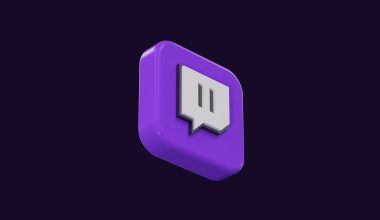Releasing your music to the world is an exciting milestone for any artist. Today, you don’t need a record label to share your track on iTunes and other major platforms. Independent artists have more control and opportunities than ever before. Whether you’re an emerging musician or an established artist looking to go solo, this guide will show you how to release your track on iTunes without a label. Let’s dive in and simplify the process so you can focus on your music.
Why Releasing Independently Is Worth It
Gone are the days when record labels were the gatekeepers to success. Now, as an independent artist, you can keep control of your music and finances. Sharing your track on iTunes without a label allows you to:
- Retain ownership of your music
- Set your own creative direction
- Earn higher royalties
- Build a direct connection with your fans
Independence doesn’t mean you’re on your own. With the right tools and platforms, you can navigate the music distribution process like a pro.
Understanding How iTunes Works for Independent Artists
iTunes is part of the Apple Music ecosystem, which has millions of users worldwide. When you upload your track to iTunes, you make it accessible to a vast audience. The key is knowing how to get your music there without a record label. Thankfully, digital distribution services have streamlined the process.
These platforms act as intermediaries, helping you distribute your music to iTunes and other stores like Spotify, Amazon Music, and Deezer. Some popular distribution platforms include:
- Deliver My Tune
- CD Baby
- DistroKid
- AWAL
Each of these platforms has unique features, but all allow independent artists to share their tracks professionally.
1. Prepare Your Music
Before you start, ensure your track is high quality. This includes:
- Mastering: Your track should be professionally mastered to meet streaming standards.
- File Format: iTunes typically requires audio in WAV format.
- Artwork: Create an eye-catching album cover. The dimensions should be at least 3000×3000 pixels.
Taking care of these details upfront will make the process smoother.
2. Choose a Digital Distributor
Select a distributor that fits your needs and budget. Here’s what to consider:
- Cost: Some platforms charge per track, while others offer unlimited uploads for an annual fee.
- Revenue Split: Look for platforms that allow you to keep 100% of your royalties.
- Additional Features: Some distributors offer promotional tools, analytics, and playlist pitching services.
Examples:
- DistroKid: Known for its affordability and fast uploads.
- CD Baby: Offers additional services like sync licensing.
3. Upload Your Music and Metadata
Once you’ve chosen a distributor, create an account and upload your track. You’ll need to provide:
- Track Title
- Artist Name
- Genre
- Release Date
- ISRC Code (If you don’t have one, most distributors will generate it for you.)
Metadata ensures your music is properly identified and searchable on iTunes.
4. Set Your Release Date
Timing is everything. Plan your release date at least 3–4 weeks in advance. This gives you time to promote your track and build anticipation among your fans.
5. Promote Your Track
Releasing your track on iTunes without a label doesn’t mean you skip promotion. Leverage your social media, email lists, and collaborations to spread the word. Tools like pre-save campaigns can generate excitement before your track goes live.
Tips for Success as an Independent Artist
Engage Directly with Your Fans
Building a loyal fanbase is essential for long-term success. Use platforms like Instagram, TikTok, and YouTube to connect with your audience. Reply to comments, share behind-the-scenes content, and ask for feedback on your music.
Collaborate with Other Artists
Collaborations can expand your reach and introduce your music to new audiences. Partner with other independent artists or influencers who share your genre or style.
Monitor Your Analytics
Most distributors and platforms provide analytics. Use this data to understand your audience’s preferences and improve your future releases.
Common Challenges and How to Overcome Them
Limited Budget
If you’re tight on funds, prioritize platforms with lower upfront costs. For instance, DistroKid offers an affordable annual plan for unlimited uploads.
Standing Out in a Crowded Market
Competition is fierce, but authenticity sets you apart. Stay true to your unique sound and tell your story through your music and marketing.
Why Consistency Is Key
Sharing your track on iTunes without a label is just the beginning. Consistency in releasing music, engaging with fans, and improving your craft will help you grow as an artist. Celebrate small wins and stay focused on your journey.
Conclusion
You don’t need a label to make your mark in the music world. By learning how to share your track on iTunes without a label, you take control of your career and open doors to incredible opportunities. Remember, the process is straightforward with the right preparation and tools. Now it’s time to share your music, connect with fans, and let the world hear your talent.
For further reading, explore these related articles:
- Monetize Your Single on YouTube Step-by-Step
- How to Monetize Your Single on YouTube Easily
- Monetize Your Single on YouTube Without a Distributor: A Comprehensive Guide
For additional resources on music marketing and distribution, visit DMT RECORDS PRIVATE LIMITED.






